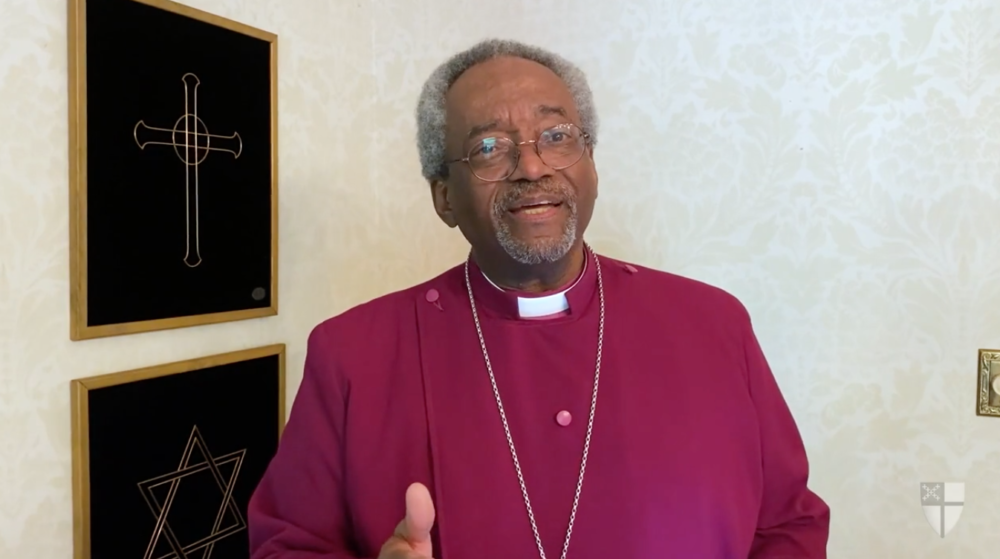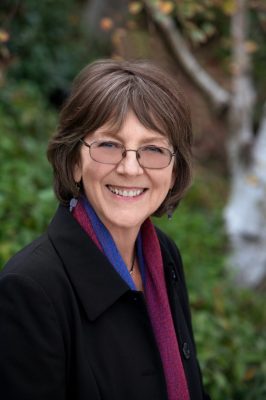Global Is Local: Easter Morning Everywhere


By Marilyn McEntyre, PhD
This Easter morning I “dressed up”: I foraged in the drawer and found a cheering pastel T-shirt to wear with the yoga pants that have become my stay-at-home uniform. We sat in our living room, drank coffee, and read a Psalm. We planned to attend the online service at our local church later in the morning, but since it wasn’t yet time for that Easter-by-internet event, I began browsing.
We went to St. Peter’s in Rome, where the magnificent basilica echoed the lector’s exquisite, slow reading of the Easter story as the camera moved solemnly around the long, empty nave—a fitting image of Italy, stricken.
We went to Notre Dame in Paris where a few gathered in the burned-out building under the partially destroyed Rose window to read and sing. Some still wore hard-hats and boots. A young woman stood alone and sang Schubert’s Ave Maria, putting, I thought, particular depth into the final words, “nunc et in hora mortis nostrae.” The deaths in France from Covid-19 are nearing 15,000.
We went to St. Martin-in-the-Fields in London where the clear window glass of the chapel allowed viewers to see mostly-empty double-decker red buses passing in the street beyond a spray of lilies and a wooden altar cross.
We went to Edinburgh and heard a kindly pastoral word (accented by an endearing burr) about celebration in time of suffering and loss, both of which we have always with us.
We went to the National Cathedral in Washington DC where Presiding Bishop Michael Curry delivered a lively message of hope, acknowledging the levels of loss and bewilderment and wistfulness so many would likely be experiencing, drawing upon the legacy of his resilient African American grandmother and mother, gently reminding us how every generation has had, in some way, to learn relinquishment and sorrow and resilience and trust, because whatever this day delivers, “It’s Easter, anyway.”
We listened to Andrea Bocelli sing in Milan where so many mourn and to the choir at King’s College, Cambridge, and to congregational singing at a Gospel mission in Chennai. We finally came home to St. Michael’s, Carmichael, and to familiar faces framed and smiling, and eager to worship from home with neighbors they missed.
I was aware that “church-hopping” might be drawing away some energy from the contemplative focus a single liturgy and its aftermath can offer, but the morning seemed to open a singular invitation to widen our awareness of a world in trauma and turmoil. What we found was a world lifted into inventive, spirited celebration, connected in ways most of us haven’t fully explored.
I thought of how electrical energy connects us. How Whitman sang “the Body Electric,” amazed at how “the armies of those I love engirth me and I engirth them.” I thought of how the energies of the earth connect us—what is carried in the wind and moves among the mites and earthworms in the soil. How the air we breathe connects us to the trees, our neighbors, binding us in mutual dependency.
I thought of the many who are finding it hard to draw that breath and of the many who working at a breathless pace to help them.
“The Lord gave,” Job said, “and the Lord has taken away. Blessed be the name of the Lord.” This Easter morning, some from the safety of our homes, some between shifts in dangerous essential jobs, some struggling with anxiety and joblessness, some living in war zones and the wreckage of local habitats and economies, we are all more acutely aware than we were two months ago of what has been taken away.
Whether the Lord has done it or we ourselves by our own devices and desires is a matter of differing opinion among those who read the biblical story. But that blessing can come, and does come, in time of great suffering is a fact underscored by story after story in the history of faith.
Blessing grows in the ashes. Plagues and epidemics have been times of remarkable invention; agriculture, communication, healthcare and education have never remained unchanged by them. Hope breeds resilience which breeds resourcefulness which breeds ideas. We don’t go “back.” We go on.
And “on” has never been entirely foreseeable, much as we may take comfort in some notion of a “foreseeable future.” A reminder I love in the Book of Common Prayer is the simple line, “Our times are in your hands.” They always have been.
We don’t know when this epidemic will be “over.” We don’t know whether there will be a second wave or a new virus, and we don’t know when. We can’t foresee, but we can lift up our gaze as well as our hearts this Easter season and, if we can’t see far into the fog, bear witness to what is already emerging in the very midst of deep disruption.
We are more focused on the heroes who attach ventilators than on those who carry A-16s. We are thinking more deeply about how children learn, and where. We are watching skies clear over largely empty roads in L.A. and Delhi and Beijing. We are finding RVs for unhoused people. We are finding new depths of outrage and determination as we see raw injustices newly exposed and their consequences made clear: what happens in prisons; what happens to the immigrant workers we depend on and allow to live in danger. What happens to our own hearts if they are not softened and broken open again when we take stock of the “evil done on our behalf.”
This morning, Easter Monday, my husband called my attention to one of the many lovely virtual choirs now online, singing apart, together. Singers from churches all over Pittsburg sang “The Lord Bless You and Keep You,” one by one and then in slow, repeated chorus—beautiful ordinary people imparting blessing, being, visibly and movingly, a priesthood of believers. May we keep finding ways—virtual, verbal, vocal, inventive—to bless one another as we walk through this changed and widened landscape, living into the paradox, apart, together.
Marilyn McEntyre is the St. Margaret’s Visiting Professor of Women in Ministry at Church Divinity School of the Pacific.

